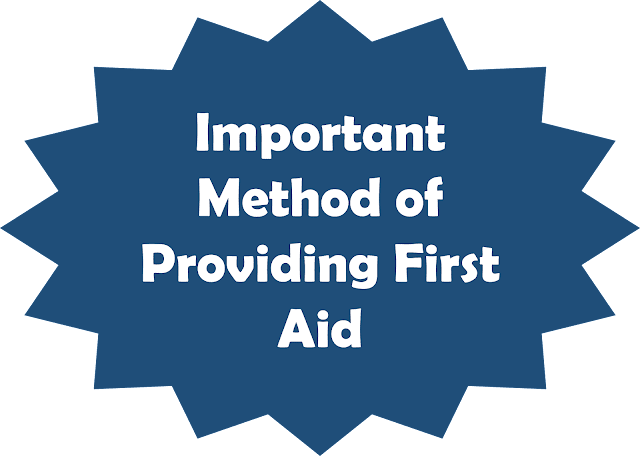Know the Method of Providing First Aid - Helptipsfree
Know the Method of Providing First Aid - Helptipsfree
Know the Method of Providing First Aid
First Aid is an immediate and temporary care given to a
victim of an accident or sudden illness before the services of a physician is
obtained.
Importance of First Aid
First Aid training helps save lives. It’s that
simple. On the job, in your home or in the community, knowing first aid allows
you to help someone who is injured or suddenly ill until help arrives or
they’re able to see a health care provider. It is observed that due to
providing first aid in some special serious cases it is helpful to save the
life of the victim. first aid for heart attack first aid for burns.
- To save life
- To prevent further injury
- To preserve vitality and resistance to infection
- To minimize the intensity of injuries and pains.
- To stop the bleeding so that the victim cannot be come unconscious
- In short providing first aid to the victim is as we give him a kiss of life.
Phases of First Aid
Self-aid
Assistance from a companion
Emergency treatment
Initial surgery
Phases of First Aid
Self-aid
Assistance from a companion
Emergency treatment
Initial surgery
First Aid Rules
Do not get excited. First, check for danger and then check
for responsiveness. Determine whether the victim is conscious. If the victim is
conscious, ask him what happened and what is wrong now. If the victim is
unconscious, proceed to check the airway, breathing and circulation. Commence
resuscitation as appropriate. first aid for fracture.
Do not move injured victim unless it is necessary. If
necessary to move a casualty, seek assistance if possible and handle gently.
Keep the victim laying down with his head level with his feet while being
examined.
Keep the victim warm and comfortable. Remove enough clothing
to get a clear. To ger a clear idea to extent of the injury.
Examined the victim gently. Threat the most urgent injuries
first and then treat the most urgent injuries first and then treat the other
injuries to the best of your ability.
Avoid allowing the victim to see his own injury. Assure him
that his condition is understood and that he will receive good care.
Do not try to give any solid or liquid substance by mouth to
an unconscious victim nor to a victim who has sustained an injury.
Do not touch open wounds or burins with fingers or other
objects except when sterile compresses, or bandages are not available, and it
is absolutely necessary to stop bleeding.
Do not try to arouse an unconscious person.
Seek medical attention immediately.
Method
of Providing First Aid: contents of a typical First Aid Kit
In addition to training employees in First Aid techniques,
it is important to have well-stocked First Aid kits available. It is a good
idea to keep all your first aid equipment kit together; store items in a clean airtight
container, such as a tin or a plastic or wooden box. Label it clearly and keep
it in a dry place. first aid for heart attack
Contents of a typical First Aid Kit
- Small packs of white paper tissues.
- Scissors, with blunt ends.
- Tweezers, with blunt ends.
- Safety pins collections.
- Clinical thermometer.
- Adhesive dressing
- Pre-packed sterile dressings for open wounds.
- Pre-packed burns dressings.
- Pre-packed sterile gauze as an alternative to cotton wool for cleaning cuts.
- Roll of cotton wool.
- Rolled gauze bandage, to keep the dressing in place.
- Adhesive tape.
- Rolled crepe bandages of sprains.
- Sterile eye pad.
- Several large linen or cotton triangular bandages for joint injuries.
- Calamine lotion for insert bites and stings.
- Witch hazel, for soothing, cuts, grazes, sprains, and insect bites.
- Antiseptic lotion.
- Antiseptic cream for infected wounds.
- Paracetamol in liquid or table form.
- Antihistamine cream to reduce swelling caused by stings.
Kneel beside the victim and support his furthest from you
and pull her towards you until he is resting again your knees.






